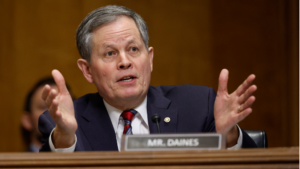Stablecoins and the New Digital Dollar Empire

As the world races into a digital financial future, stablecoins – a form of cryptocurrency pegged to fiat currencies like the US dollar – are emerging not only as instruments of innovation but also as stealthy tools of geopolitical leverage. While their promise of fast, borderless, and stable-value digital payments captures global attention, the quieter and more dangerous implications are being largely ignored, especially in the Global South.
The explosion of dollar-backed stablecoins such as Tether (USDT) and USD Coin (USDC), now collectively worth over $250 billion, is reshaping the global financial architecture. Nearly all of these digital tokens are anchored to the US dollar, giving the United States a new means of exerting global economic influence under the cover of technological advancement. What is at stake is not just financial efficiency, but the monetary sovereignty of nations.
This concern was recently raised by Jürgen Schaaf, an advisor at the European Central Bank (ECB), who warned that widespread adoption of dollar-pegged stablecoins in the eurozone could lead to a form of “digital dollarization.” In such a scenario, European citizens and businesses may begin using stablecoins for savings, settlements, and daily transactions, diminishing the ECB’s control over its monetary policy, interest rates, and even financial stability.
If Europe – with its robust financial institutions and integrated monetary mechanisms – fears the creeping loss of monetary control, the threat to developing economies is exponentially more perilous.
To understand the true danger of stablecoins, we must revisit the past. The economic history of the 20th century is littered with examples of how US dollar dominance shaped – and often shackled – the destinies of countries in the Global South.
During the Cold War, Latin American countries were lured into dollar-denominated debt traps through generous credit flows, only to face the wrath of structural adjustment programs and economic collapse in the 1980s. In Africa, dollar-dependence exposed nations to global shocks, where currency crises and capital flight became recurrent themes. In the Middle East, dollar-linked oil trading consolidated US economic supremacy under the “petrodollar” system. Even in Asia, countries like Indonesia, Pakistan, and Thailand faced dollar-induced instability during the 1997 financial crisis when dollar outflows triggered market panic and IMF intervention.
This historical arc highlights a pattern: when a nation’s financial system leans too heavily on the dollar, it effectively imports American monetary policy. Interest rates set in Washington ripple through Karachi, Lagos, and Buenos Aires, often irrespective of local needs or realities.
Stablecoins risk becoming the digital extension of that same old pattern – faster, more private, and harder to regulate.
Unlike traditional banking systems, stablecoins operate on blockchain rails, often managed by private US-based companies. Though decentralization is frequently championed, most stablecoins are far from it. They are centrally issued, managed, and controlled by firms bound by US regulations, market logic, and – when necessary – political pressure.
This raises profound questions about financial sovereignty. What happens when millions in Africa or Asia store their wealth in US-backed digital tokens? What if the issuing company freezes wallets due to sanctions or pressure from Washington? In the age of digital finance, economic embargoes will not require military action or even traditional banking pressure – a single code change could render entire populations financially inert.
This isn’t a hypothetical future. The world has already witnessed the US government’s ability to freeze and confiscate overseas dollar reserves, as in the case of Afghanistan’s central bank or the sanctions placed on countries like Iran and Venezuela. With stablecoins, the threshold for such digital interventions is lower and the impact wider.
Central banks are not blind to these risks. The ECB’s warning echoes those of the Bank for International Settlements (BIS), which recently issued a sharp critique of stablecoins in its 2025 annual report. According to the BIS, stablecoins “perform poorly” as money due to their lack of central bank backing, limited capacity to support credit creation, and vulnerability to market shocks. The report also emphasized their potential to foster illicit financial flows and destabilize local monetary systems.
Such warnings should be heeded seriously, especially by emerging economies whose institutions may not be resilient enough to manage an influx of stablecoin usage without undermining their own central banks and domestic banking networks.
Indeed, even the ECB’s digital euro initiative – pitched as a “defensive line” – illustrates how seriously stablecoin-induced dollarization is being taken in Europe. Yet, most countries outside of the Western financial architecture are far behind in formulating coherent responses.
Stablecoins are not just about money; they are about power. As geopolitical rivalries sharpen, digital currencies are becoming arenas of soft control and silent confrontation.
Russia and Iran, for instance, have explored digital currencies to bypass sanctions and reduce dependence on Western financial infrastructure.
Meanwhile, the United States has not only tolerated the rise of dollar-based stablecoins—it has, in many ways, facilitated it. The passage of the GENIUS Act in 2025 provided legal clarity and support for dollar-pegged stablecoins under federal oversight. Proponents argue this will modernize global finance; critics argue it merely solidifies the dollar’s imperial reach into the digital realm.
For those who recall the painful lessons of IMF conditionalities, debt crises, and currency devaluations, the idea of tying one’s economic future to a private token backed by a foreign power should be alarming.
As this digital frontier expands, the question is not merely who leads the innovation race – but who retains the right to define their own monetary destiny.


